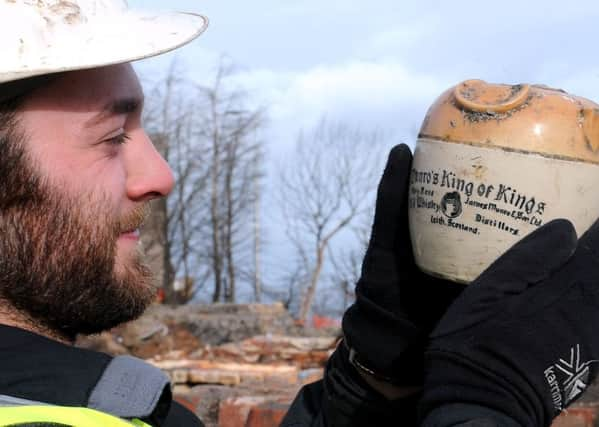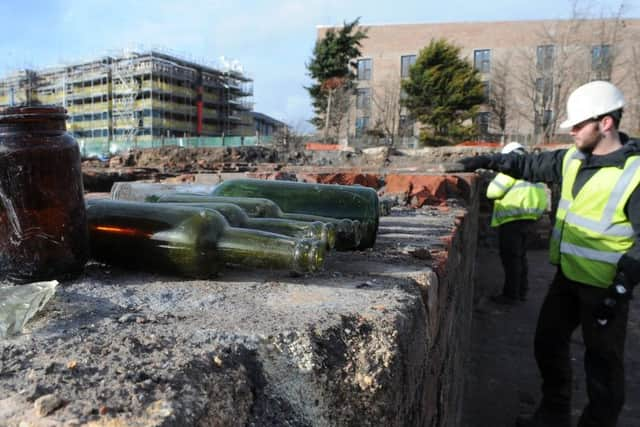Industrial history unearthed at Portobello archaeological dig


Evidence of the seaside area’s bottle and brick-making history have been uncovered at Baileyfield Crescent during excavations by AOC Archaeology Group in partnership with Edinburgh City Council and Barratt Homes.
The work is being carried out in advance of development of the site by Barratt Homes.
Advertisement
Hide AdAdvertisement
Hide AdMembers of the public are invited to visit the site today to meet the archaeologists and see what has been found so far.


Structural remains of the bottle works and the brick factory that stood in the area have been revealed, as well as evidence of earlier pottery work.
Archaeological remains relating to the Abercorn Brick Works that stood in the 19th century and Baileyfield Glass Works that closed in 1968 have given researchers a new insight into the factories’ history and life in Portobello at the time.
Rob Engl, project manager for AOC Archaeology Group told the Evening News that the findings although not ancient were very important documents of Edinburgh’s industrial history.
Advertisement
Hide AdAdvertisement
Hide AdHe told how archaeologists found bricks still in kilns which was “sad because the factory had failed”.


Bottles unearthed from the 20s and 30s showed that the Portobello factory produced glassware that was sent to America.
The bottles were emblazoned with “federal law prohibits resale” and are thought to date back to prohibition.
Fire buckets, traces of demolished floors and chimneys and 15 metres of a cobbled road have also been found.
Advertisement
Hide AdAdvertisement
Hide AdRob Engl said: “It was a very successful excavation with lots of evidence that we will tie up with historical records.
“Now we’ll build a story to add to the history of the site. The more people that know about it the better. It’s everybody’s history. We all like to know where we’ve come from.”
He and his team will now map out the evidence and write a paper on their findings.
The site was of interest to council archaeologist John Lawson who placed a planning condition ensuring the dig could be carried out because of its industrial footprint.
Advertisement
Hide AdAdvertisement
Hide AdJason Watt, technical director of Barratt Homes East Scotland said it was a fascinating experience.
He said: “From its time as an industrial hub to its role as Edinburgh’s beach resort, Portobello has a varied past and the findings already uncovered as part of our preparatory work on the Baileyfield site are fascinating.
“We are very excited to be working with the City of Edinburgh Council to showcase the archaeological building remains discovered on the site at the excavation open day.
“We look forward to welcoming people along and we will be on hand to answer questions about the findings and their connection with the area’s local history.”
Visitors are welcome to visit the site today between 10am and 3pm. Access is via Baileyfield Crescent.